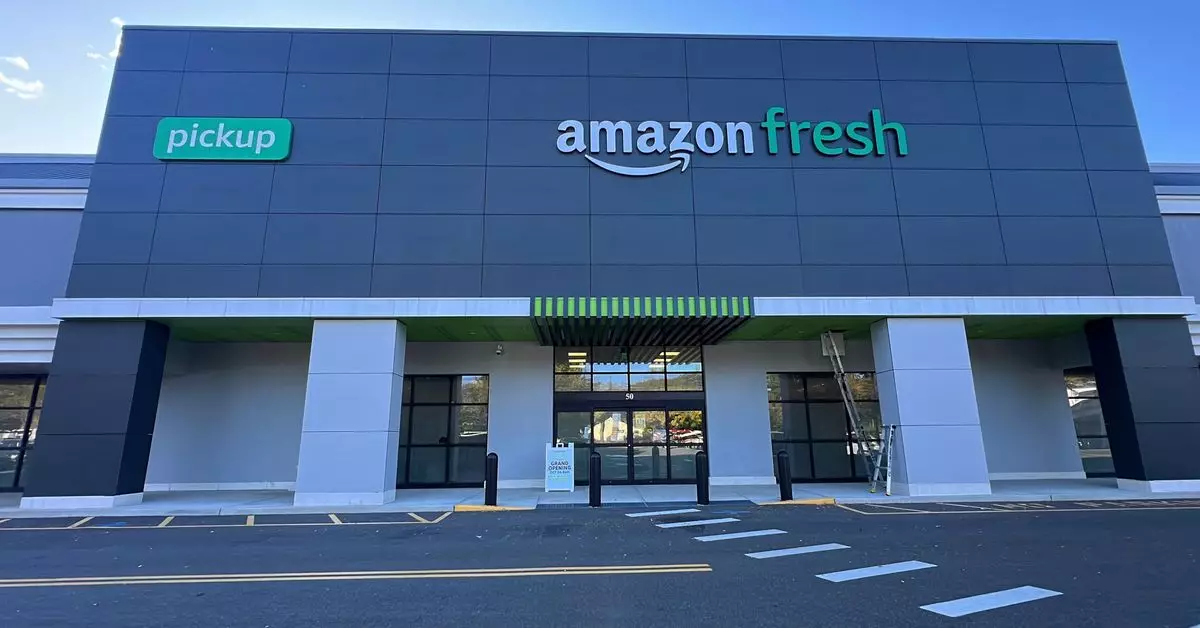Amazon is once again in the spotlight as it explores innovative strategies to enhance its grocery business. According to recent reports from The Wall Street Journal, the retail giant is experimenting with a hybrid model that intertwines the operations of its upscale Whole Foods Market with the more value-focused Amazon Fresh. This potential merging could lead to significant shifts in how consumers shop for groceries, as Amazon works towards a streamlined brand experience that caters to a diverse range of customer needs.
By leveraging fulfillment centers dedicated to Amazon Fresh to distribute Whole Foods products, Amazon aims to create a more cohesive shopping experience. This strategy raises intriguing possibilities about how brands are defined and perceived in the grocery market. For instance, can an upscale grocery experience effectively coexist within a framework designed for more economically minded shoppers? In theory, this integration could render shopping more convenient, allowing customers to purchase everything from organic vegetables to household essentials in one stop.
One of the most compelling components of Amazon’s plan includes the establishment of a microfulfillment center within a Pennsylvania Whole Foods location. This innovative approach not only increases operational efficiency but also challenges conventional grocery shopping paradigms. By stocking this center with products generally found at Amazon Fresh, the company is likely to drive foot traffic into its Whole Foods locations while exposing consumers to a broader selection of products.
This strategy does raise questions regarding inventory management. How will Whole Foods maintain its brand integrity when stocking products that may not align with its ethos? And conversely, how will Amazon Fresh maintain its position when functioning within the upscale supermarket environment? The success of this microfulfillment model will ultimately rely on how well these different brand identities can coexist without alienating loyal customers on either side.
Another intriguing dimension of Amazon’s grocery endeavors is the experimental “Amazon Grocery” section being piloted inside a Chicago Whole Foods. The introduction of non-traditional grocery offerings—items that Whole Foods usually wouldn’t stock—can significantly alter customer perceptions. This initiative could serve as a litmus test for larger-scale adoption of Amazon’s approach to grocery shopping, as customers may be attracted to the convenience of a one-stop shop.
However, expanding product ranges within a store known for premium products risks diluting the brand’s identity. This gamble has the potential to alienate the core customer base that frequents Whole Foods for its curated offerings. Moreover, how well do these diverse product types mesh with the overall shopping experience?
The Broader Context of Amazon’s Retail Strategy
This latest foray into the grocery market is just one chapter in an expansive narrative of Amazon’s retail evolution. The company has an established history of rolling out innovative initiatives aimed at reshaping consumer habits, such as its unlimited grocery subscription service and the Dash Carts. But there is a dual edge to this strategy: as it pushes towards convenience and innovation, Amazon has also scaled back its cashierless technology, indicating possible growing pains in execution.
Ultimately, Amazon’s approach to integrating its grocery operations demonstrates both promise and risk. Its ability to harmonize varied brand identities while offering consumers a truly enhanced shopping experience will be pivotal. As traditional giants like Walmart and Kroger dominate the environment with established logistics, Amazon’s unique operations could either carve out a new niche or complicate its already diverse offerings within the competitive grocery landscape. The evolution of Amazon’s grocery business will be one to watch as consumer preferences and shopping behaviors continue to shift.


Leave a Reply